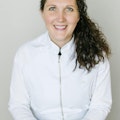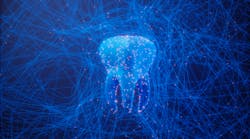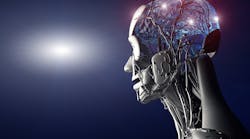I attended the National Mobile and Teledentistry Conference in 2022, where I learned about dental informatics. It was a new term I’d never heard. Could I really be more efficient, accurate, and therefore deliver more patient-centered care just by having the right information at my fingertips? The answer is yes! By using technology, we can collect, manage, and analyze patient data to improve oral health.
9 ways to leverage dental informatics to improve oral health
Wearable health devices
Wearable health devices can track oral health indicators, such as habits related to teeth grinding (bruxism), or provide reminders about oral hygiene practices that enhance preventive care. They can be worn in the mouth in trays or as chips attached to teeth to analyze a patient’s saliva. We can then use this information from technology to help patients make better oral health choices.
Consumer health-care apps
There are apps designed specifically for oral health. These allow patients to track brushing habits, schedule dental appointments, and receive reminders for dental checkups or hygiene practices.
Dental patient portals
Dental patient portals enable patients to view their treatment history, manage appointments, access educational materials about oral health, and communicate directly with their dental providers. Portals promote patient engagement by enabling access to personal dental health information. If a patient has their diagnosis and records at their fingertips, they can take charge of their oral health.
Electronic dental records
Many offices have incorporated electronic dental records that allow them to store comprehensive patient information, including dental histories, treatment plans, radiographs, and notes from dental visits. This leads to better continuity of care. Electronic records are easy to share and communicate between providers. We can use the analytics from electronic records to identify the needs of our patient populations.
Scheduling
With the shortage of dental staff, dental informatics can automate administrative tasks such as appointment scheduling and billing.
Clinical health data systems
These systems analyze dental health trends in the population and manage treatment outcomes, which helps dental practices improve patient care and be more efficient. New AI systems will allow us to use office data to see trends and identify risks within our patient population. These systems will also improve diagnostic accuracy and improve treatment planning.
Teledentistry
This allows patients to consult with their dental professionals remotely for questions, evaluations, and follow-ups. Teledentistry can be used for all patients, including those in remote areas or with mobility issues.
Electronic prescription services
Dentists can send prescriptions directly to pharmacies electronically, minimizing errors and streamlining the process.
Dental education
Dental informatics plays a key role in dental education. Imagine virtual learning and simulations that show live data about student performance to improve and standardize overall skills and techniques.
Overall, dental informatics is important in dentistry as we collect and leverage data to develop new technologies and work toward innovations that will improve oral health globally. I recently became a member of TeethCloud, an organization that advocates for dental informatics. You can join for free to stay up to date on the latest dental informatics advances.
One of my favorite parts is the dental informatics maturity scale at teethcloud.org/di-maturity/. I scored a 4 out of 5, reminding me that I still have a lot to learn as I invest in decreasing inequalities in global oral health through dental informatics.
About the Author

Shelley Brown, MEd, BSDH, RDH
Shelley is a dental educator, speaker, content creator, and mobile clinician dedicated to advancing accessible and innovative dentistry. As co-owner of HYGIENE edgeUCATORS, she empowers dental educators through professional development. Since 2009, she has taught at the Utah College of Dental Hygiene and founded Homebound Smiles, a mobile dental practice serving underserved patients. She also runs Shelley.Dental, a YouTube and TikTok platform focused on patient education and minimally invasive dentistry.


